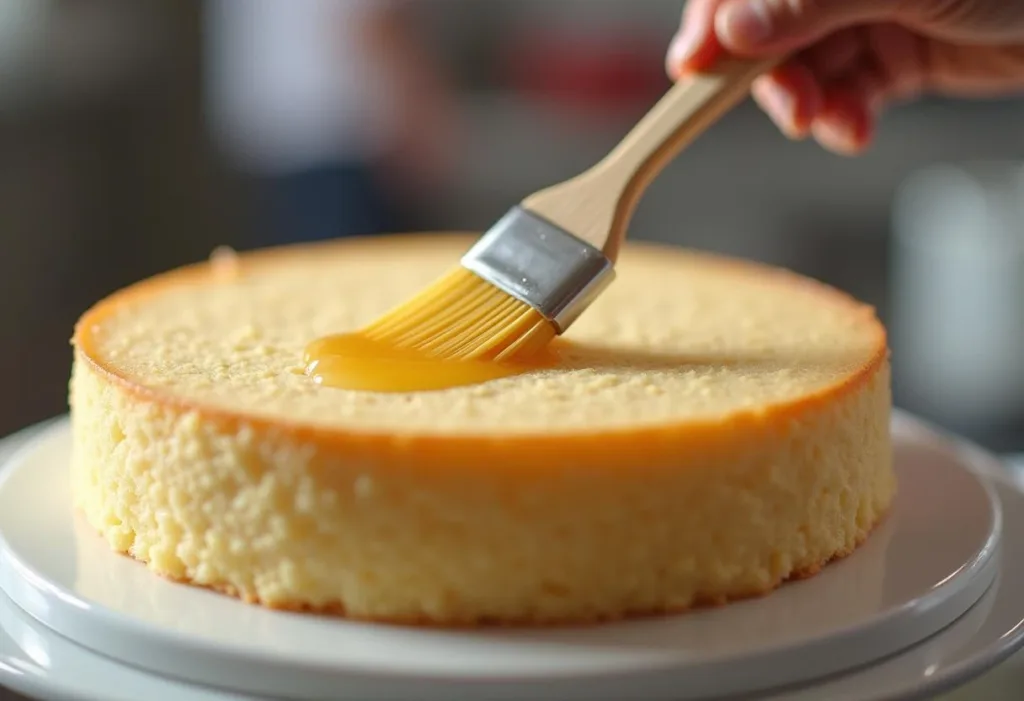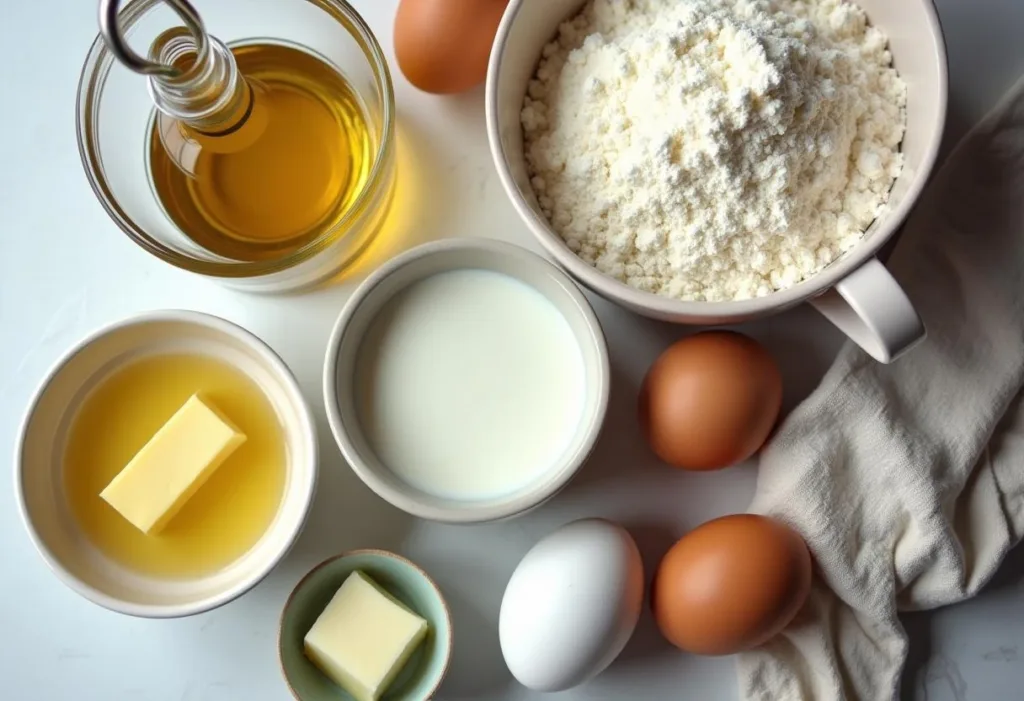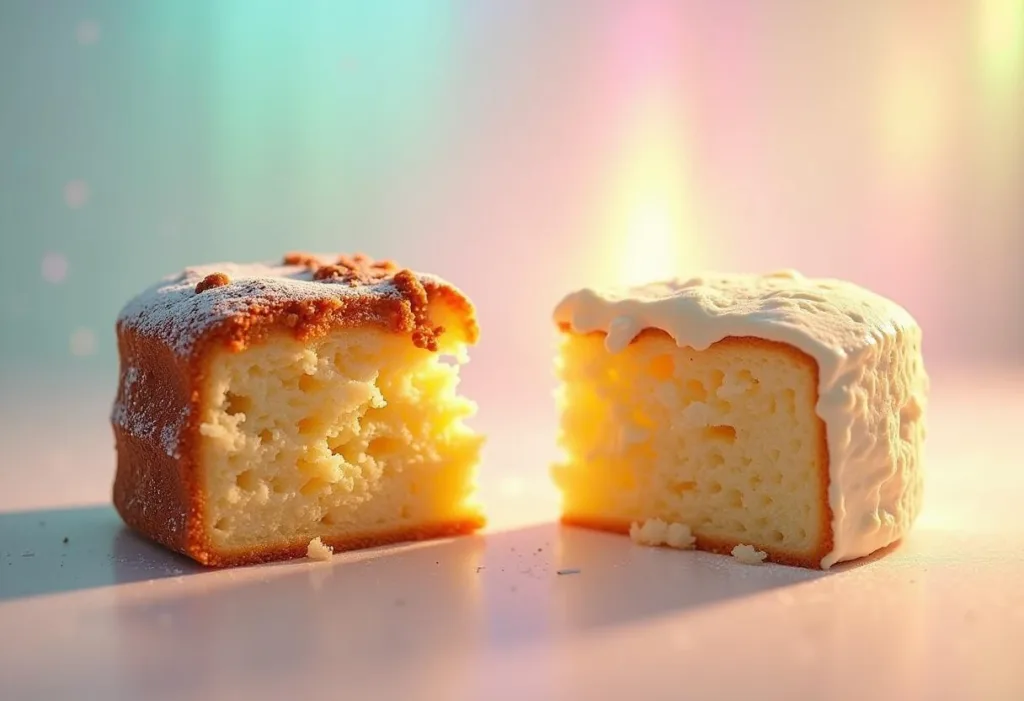Oh, the joy of a perfectly super moist cake! Mamma mia, is there anything better? That soft, tender bite that just melts in your mouth – it’s pure baking heaven. My husband still talks about a chocolate cake I made years ago that was so moist it practically needed a napkin bib! Conversely, a dry cake? Ugh, the worst! Like a bad first date – crumbly and disappointing. Texture is everything, right? Achieving that perfect, elusive super moist texture is the goal for all of us bakers, whether you’re just starting out or you’ve been around the block a few times. So, what’s the real secret? How do we make a cake so moist it practically sings? Let’s figure it out together! We’re on a delicious quest for the ultimate moist cake!
Get ready for tips, tricks, and maybe just a tiny bit of baking science (the fun kind, promise!). Grab your apron, put on some good music (maybe some Sinatra?), because this is going to be a deliciously fun ride! We’ll explore exactly what makes a cake incredibly moist, and how you can bake one up every single time.
Understanding Moist Cakes
Defining Moist Cakes
So, what do we *really* mean by “super moist”? It’s not just soggy, okay? A truly perfect moist cake has this amazing tender crumb. It feels soft and delicate, almost velvety, but still holds together beautifully. It’s that sweet spot between light-as-air and satisfyingly substantial. It tells you the baker knew what they were doing! That lovely moistness comes from getting the liquids just right and making sure they stay put during baking. A dry cake? Crumbly, maybe a little tough… just plain sad. But don’t worry! We’re unlocking the secrets to that dreamy, moist texture we all adore in a super moist cake. Still curious about the basics? You might want to check out how to make cake moist and fluffy here!
Common Challenges to Achieving a Moist Cake
Before we get to the happy stuff, let’s face the villains of dry cake. Overbaking! Mamma mia, it’s the number one enemy! Leaving your cake in the oven too long is like sending it on vacation to the Sahara – it comes back parched. We’ve all done it! Also, not having enough liquid (fat or wet ingredients) in the batter is an obvious culprit. Using the wrong flour (too much protein!) or simply measuring your flour incorrectly (packing it down!) can also suck the moisture right out. And don’t forget overmixing! Getting too enthusiastic with that mixer develops too much gluten, making your cake tough instead of tender. The good news? Totally avoidable! Let’s learn how to bake that perfect super moist cake.
Key Ingredients for Moisture in a Super Moist Cake
The Role of Fats in Moist Cakes
Let’s talk fat, baby! For a super moist cake, fat is your BFF. Butter, oil, shortening, even yogurt or sour cream – they are essential for that tender, melt-in-your-mouth magic. Fats work by coating the flour particles, basically telling the gluten strands to chill out and not get too tough. This keeps the cake tender and helps hold onto moistness.
Want to know more about how fats tenderize gluten in baking? It’s fascinating stuff!
Butter adds amazing flavour and richness, contributing to that lovely moistness. Oil (like vegetable or canola) is a moisture superstar because it stays liquid even when the cake cools, guaranteeing a soft, moist crumb every time. That’s why many recipes aiming for a super moist cake use oil or a combination of butter and oil! Don’t be afraid of fat – it’s crucial for a truly great moist cake.
Want a refresher on the basics? Explore understanding the 5 main ingredients in cake – fat is definitely a key player!
Secret Ingredients for a Super Moist Cake
Okay, time for some secret weapons! Beyond the usual suspects, ingredients like yogurt, sour cream, and buttermilk are miracle workers for moist cakes. These tangy wonders add fantastic flavour and incredible moisture. The fat in full-fat yogurt and sour cream adds richness and tenderness. Plus, their acidity helps tenderize the gluten (just like fat does!). Buttermilk, even though it’s lower in fat, also brings that helpful acidity and unique tenderness, making cakes incredibly soft. Using one of these is like giving your cake batter a spa day – it comes out relaxed, tender, and beautifully moist. Try adding a dollop to your favourite recipe and see the difference! Definitely key for a super moist cake.
Which Ingredient Makes the Cake Soft and Moist?
So we want moisture, but we also want softness, right? That dreamy, tender texture is vital for a truly super moist cake experience. It’s not just about being wet; it’s about that delicate crumb.
Cake Flour for a Soft and Moist Cake
Let’s talk flour power! For the softest, most tender moist cake, cake flour is your secret weapon. Why? It has less protein than all-purpose flour. Less protein = less gluten development when you mix. Less gluten = a more delicate, tender, melt-in-your-mouth crumb. It’s that simple! Using cake flour can instantly level up your cake’s softness, especially for things like sponge cakes or white cakes where you want that ethereal texture. It’s a game-changer for achieving that super moist cake feel.
Leavening Agents for a Light and Moist Cake
Don’t forget the lift! Baking powder and baking soda are our bubbly friends. They create those tiny air pockets that make a cake light and airy, preventing it from being a dense brick. That airiness contributes to the overall feeling of softness and moistness. But use them wisely! Too much can taste weird, too little means a sad, flat cake. Follow your recipe carefully! These leaveners work hard to give your moist cake that perfect texture.
The Science of Cake Batter and its Impact on Moisture
Hydration in Batter for a Moist Cake
Time for a tiny bit of kitchen science – hydration! It’s not just about dumping liquid in; it’s about the balance between liquids and flour. This ratio is everything for locking in moisture and getting that perfect super moist cake. Too little liquid? Dry cake tragedy. Too much liquid? Gooey, unset disaster. Mamma mia!
You want that Goldilocks batter – just right. The liquid hydrates the flour, plumping up the starches and proteins, which helps create tenderness. So, measure carefully! Using a kitchen scale is the best way to ensure accuracy. Getting this balance right is fundamental to avoiding a dry cake and achieving that tender, delicious moist cake crumb.
What Does Adding an Extra Egg Do to Improve Moistness?
Eggs are baking wonders! They bind, they lift, they add colour… and yes, they contribute to a super moist cake! The fat in the yolks adds richness and tenderness, while the whites provide structure and moisture. So, what happens if you add an extra egg (or even just an extra yolk)? You often get a richer, more tender, and more moist cake! That extra fat from the yolk works wonders on the texture. Just be careful – adding too many eggs can sometimes make a cake heavy or taste eggy. It’s a great trick to try, especially with cake mixes, to boost that homemade moistness.
Techniques for Baking Super Moist Cakes
Proper Mixing Methods for Moist Cakes
How you mix matters! A lot! This step can make or break your quest for a super moist cake. Let’s look at two common approaches:
The classic “creaming method”: You beat the butter and sugar together until light and fluffy, trapping air for a lighter cake. Then add eggs, and finally alternate adding dry and wet ingredients. Great for structure and lift, and can definitely yield a moist cake if you don’t overmix at the end.
Then there’s the “reverse creaming method”: Here, you mix the dry ingredients first, then blend in the softened butter until it looks like sand, then add the liquids. This coats the flour in fat before the liquid hits it, which minimizes gluten development like crazy! The result? An incredibly tender, fine-crumbed, often very super moist cake. It’s a fantastic technique worth trying! Check out some different techniques for moist cake right here on the blog!
Optimal Baking Temperature and Time for a Moist Cake
Okay, oven time! Getting the temperature and timing right is crucial for keeping that super moist cake dream alive. Too hot? You risk dry edges and a potentially raw middle. Too cool? The cake might take forever, drying out as it bakes slowly. The sweet spot is usually a moderate oven, around 325-350°F (160-175°C). Use an oven thermometer – they’re cheap and reveal if your oven is lying to you (mine totally does!). And don’t just set a timer and walk away! Start checking for doneness a few minutes before the recipe suggests. Remember the toothpick test: look for moist crumbs, not a perfectly clean stick! Every minute counts towards perfect moisture.
Secrets from Professional Bakers for Super Moist Cakes
How Do Bakers Achieve a Super Moist Cake?
Ever wonder how bakery cakes stay so ridiculously moist? It’s often a combination of the things we’ve discussed: using oil or oil/butter blends, adding ingredients like buttermilk or sour cream, careful mixing, and precise baking. But they also have a few extra tricks!
One big one is often using simple syrup! Brushing cooled cake layers with a sugar-water syrup adds instant moisture and helps keep the cake fresh longer. They also rely heavily on high-quality ingredients and often use recipes with slightly higher fat or sugar ratios specifically designed for maximum tenderness and moistness. Practice makes perfect, and they bake a LOT! They know exactly how their ingredients and ovens behave to get that consistent super moist cake result.
What Do Bakers Put on a Cake to Enhance Moisture?
Beyond the batter itself, pros use finishing touches to lock in that precious moisture. That simple syrup trick (learn how to make soak syrup here!) is a huge one for keeping cakes moist. Frosting is another key player! A good layer of buttercream, cream cheese frosting, or ganache acts like a delicious seal, preventing the cake from drying out. They also often wrap cakes tightly in plastic wrap once cool, especially before frosting or storing, to trap every last bit of moisture. It’s these little post-bake steps that help guarantee a delightful, moist cake experience from the first slice to the last.
Storing and Preserving the Moistness of Your Cake
Best Practices for Storage of a Moist Cake
You baked a stunningly moist cake – hooray! Now, how do you keep it that way? Storage is key! Rule #1: Let it cool COMPLETELY before wrapping. Wrapping a warm cake traps steam and can make it soggy (not the good kind of moist!). Once totally cool, wrap it well in plastic wrap – be generous! – or place it in a truly airtight container.
Most unfrosted cakes are best stored at room temperature for a day or two. If it’s frosted (especially with cream cheese or whipped cream frosting), the fridge is usually necessary. Just make sure it’s covered well to prevent drying out or absorbing fridge smells (yuck!). Always, always bring refrigerated cake back to room temperature before serving – cold cake tastes drier and less flavourful. Proper storage protects your precious moisture!
Reviving a Dry Cake to Restore Moistness
Okay, it happened. Despite your best intentions, the cake is a little dry. Don’t toss it! We can try some cake CPR. If it’s just slightly dry, the simple syrup trick (brushing cooled cake with cooled sugar-water) can work wonders, adding moisture back in. Another old trick: place the cake in an airtight container with a slice of fresh bread or an apple wedge overnight (remove the bread/apple in the morning). They release moisture, helping to soften the cake.
If it’s beyond a simple syrup fix? Get creative! Cube it up for a trifle, layer it with pudding and fruit. Crumble it for cake pops. Toast slices and serve with ice cream and caramel sauce. A slightly dry cake can still be delicious with a little imagination – you’re just giving it a second chance to be moist and wonderful in a new way!
Frequently Asked Questions:
How do bakers get their cakes so moist?
This is a question we’ve touched on throughout this article, but let’s recap. Professional bakers use a combination of the right ingredients (lots of fat, yogurt, sour cream, buttermilk), proper techniques (creaming or reverse creaming), and careful baking conditions to achieve a super moist cake. They also often use simple syrups and frosting to lock in moisture. Furthermore, they often work with high-quality ingredients and practice a lot to perfect their recipes. It’s a mix of science, technique, and artistry that results in those incredibly moist cakes you see in bakeries. It’s not just one thing; it’s the sum of many careful steps when striving to create a moist cake.
What do bakers put on cake to keep it moist?
As we’ve discussed, bakers use syrups, glazes, and frostings to keep cakes moist. Syrups add extra moisture directly into the cake layers, helping them be more moist. Glazes and frostings act as a protective barrier, preventing moisture from escaping. The right combination of these techniques can dramatically increase the overall moisture and longevity of your baked goods. Furthermore, they often wrap the cakes well as they cool, trapping in any steam to ensure a more moist cake.
What does adding an extra egg do to a cake mix to make it more moist?
Adding an extra egg to your cake mix can have several beneficial effects when you’re aiming for a moist cake. It will add extra fat and liquid, which contributes to a more moist and tender crumb. The additional protein also helps to strengthen the structure of the cake. However, it’s important not to overdo it. Too many eggs can result in a dense and rubbery texture. Therefore, it’s all about finding the right balance to achieve that perfect moistness.
Which ingredient makes the cake soft and moist?
Several ingredients work together to achieve a soft and moist cake. Cake flour, with its lower protein content, is a key player. Additionally, fats like butter and oil tenderize gluten, creating a more tender texture. Leavening agents like baking powder and baking soda create air pockets, preventing the cake from being dense. Finally, dairy ingredients like yogurt and buttermilk introduce moisture and richness for a soft, supple texture. In conclusion, it’s the combination of all these ingredients working together that creates that perfect soft and moist texture.
So there you have it, my lovely bakers! The elusive secret to a super moist cake isn’t some mystical spell – it’s a beautiful blend of understanding your ingredients, using the right techniques, and paying attention to those little details. It’s about the magic of fats, the helping hand of buttermilk or yogurt, the gentleness of mixing, and the patience of baking and cooling. A truly great moist cake is within your reach!
Remember, baking should be fun, a way to show love (to others and yourself!). Don’t be afraid to try these tips, experiment a little, and find what works best in your kitchen. Maybe your next cake won’t just be moist, it’ll be the legendary moist cake everyone talks about! My picky son and chatty daughter are always my toughest (and cutest) critics, and getting their seal of approval on a moist cake is the ultimate win!
Now, I’m dying to know! What are your secrets for baking a perfectly moist cake? Any family tricks or favourite ingredients? Share your wisdom, your questions, or just your love for delicious cake in the comments below. Let’s build our own little club of moist-cake masters! Happy Baking, amici!




Leave a Reply